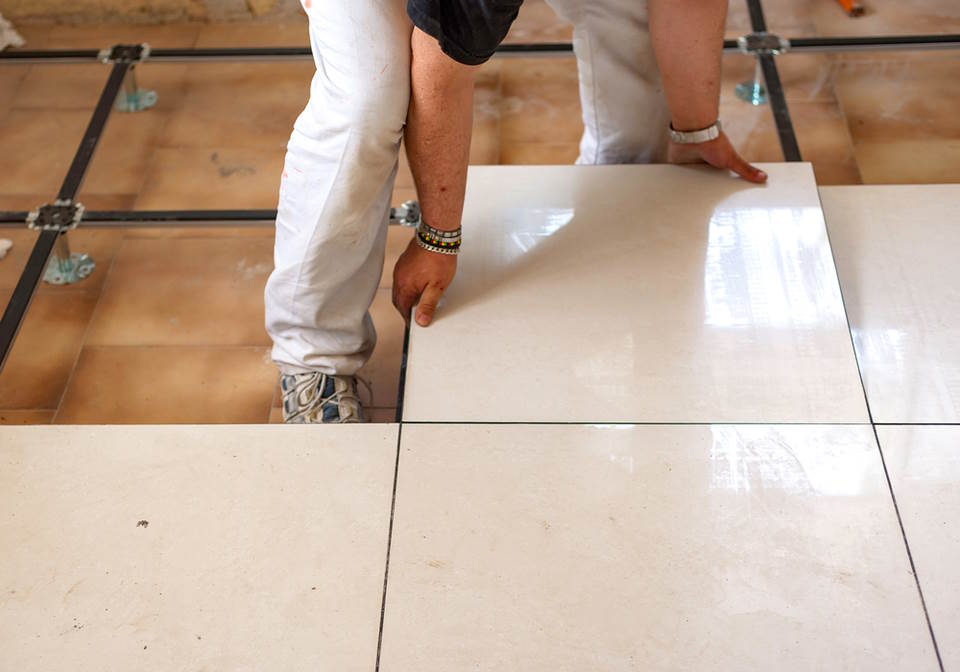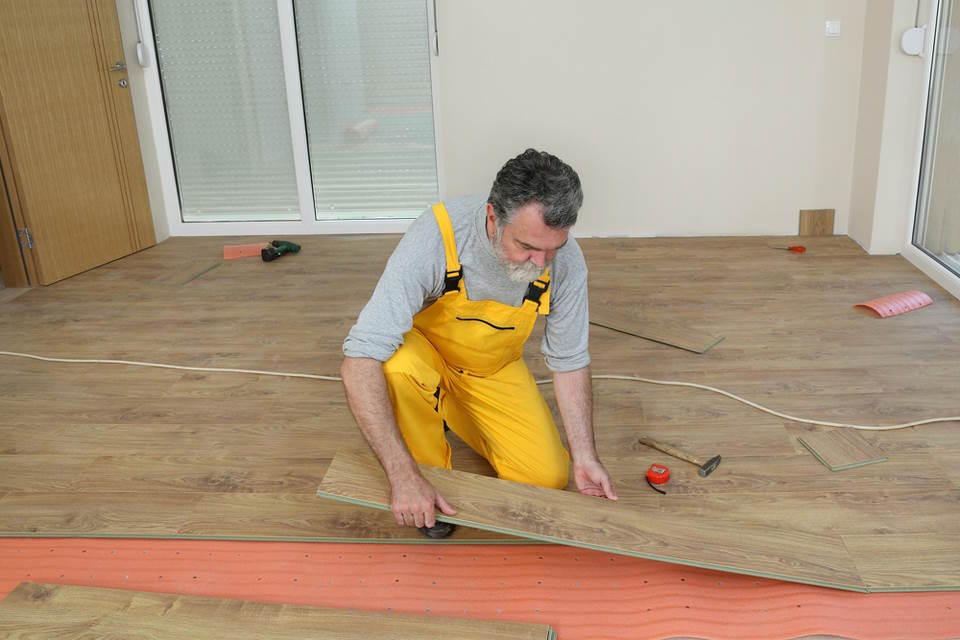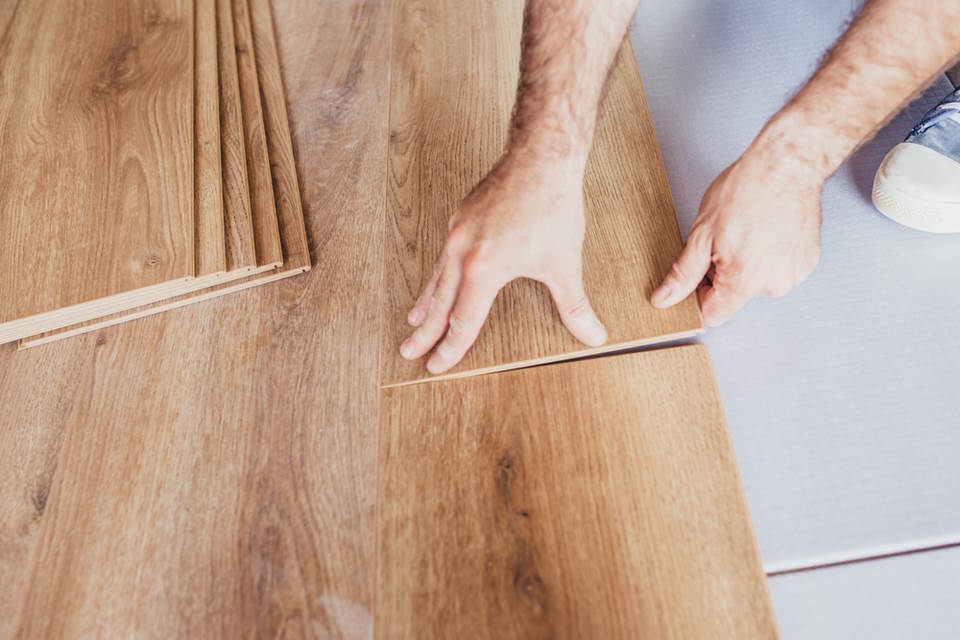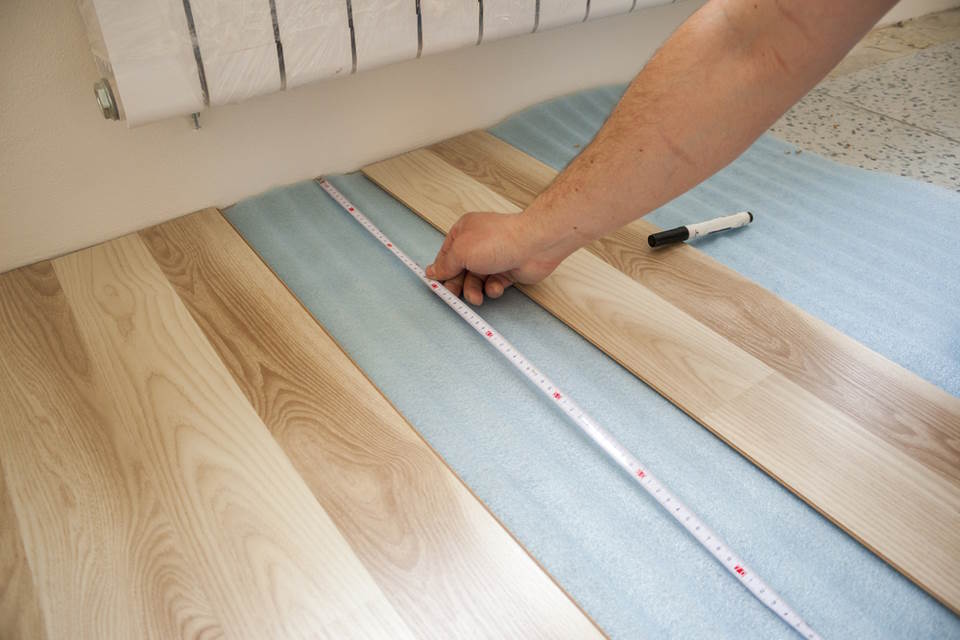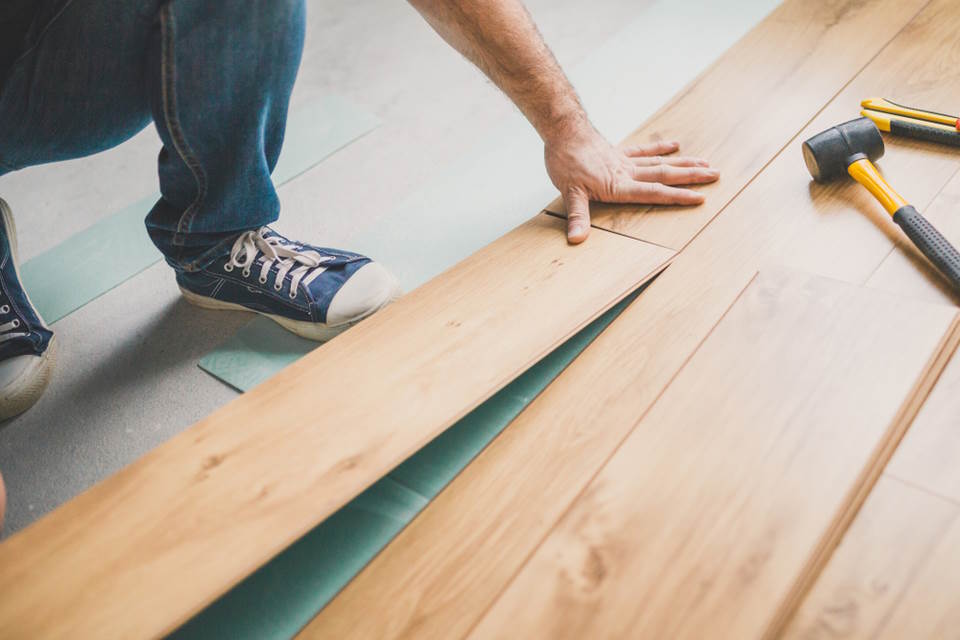If you’re in the market for new flooring, you may have heard of something called a “floating floor.” But what exactly is a floating floor, and why might you want one? A floating floor is a type of flooring installation that doesn’t require nails or glue to keep it in place. Instead, the planks or tiles are simply locked together and then laid on top of a subfloor.
There are many advantages to floating floors, such as ease of installation and the ability to be installed over almost any type of subfloor. However, there are also some disadvantages to consider before making a decision. In this blog post, we’ll explore what floating floors are, how they work, and the pros and cons of this type of flooring installation.
What Is a Floating Floor?
A floating floor is a type of floor installation that does not attach to the subfloor or underlying structure. Instead, the individual boards, tiles or planks of the floor interlock with each other to create a unified surface that “floats” above the subfloor. This method of installation is commonly used for hardwood, laminate, and engineered flooring materials.
One of the main benefits of a floating floor is the ease of installation. With this method, there is often no need for nails, glue, or other attachment materials. This can make the installation process faster and less labor-intensive, which can save time and money. In addition, if you ever want to make changes or upgrades to the flooring, a floating floor can be easier to remove and replace.
However, there are also some potential disadvantages to a floating floor. Depending on the materials used and the overall design of the floor, it may not be as stable or durable as a traditional nailed-down or glued-down floor. Additionally, floating floors may not be suitable for areas with high levels of moisture or humidity, which can cause the boards to warp or buckle over time.
| Advantages | Disadvantages |
|---|---|
| Easy installation. | May not be as stable or durable. |
| Quick installation. | Not suitable for areas with high moisture or humidity. |
| Cost-effective. | May not be suitable for high traffic areas. |
| Easy to replace. |
| Floating floor | Traditional floor | |
|---|---|---|
| Installation | Interlocking | Nailed or glued |
| Durability | Varies depending on materials and design | Generally more durable |
| Moisture resistance | May not be suitable for high moisture or humidity | Can be treated with sealants or protectants |
| Cost | Varies depending on materials and installation method | Can be more expensive due to labor and materials |
Overall, a floating floor can be a practical and cost-effective choice for many homeowners and builders. However, it’s important to consider the materials, design, and intended use of the floor before deciding on a floating installation method. If you have concerns about durability, stability or moisture resistance, it may be best to talk to a flooring professional before making a final decision.
What Is the Purpose of a Floating Floor?
A floating floor is a floor that is not attached to the subfloor or underlayment but instead is laid on top of it. A floating floor can be made of any material, including hardwood, laminate, or vinyl. The purpose of a floating floor is to create a smooth, stable, and uniform surface that is easy to install and maintain.
One advantage of a floating floor is that it can be installed over an existing floor without the need to remove it. This means that you can install a new floor without having to go through the messy and time-consuming process of ripping out the old one. Another advantage is that a floating floor can be installed quickly and easily, without the need for specialized tools or equipment.
- The disadvantages of floating floors include a lack of sound absorption and insulation. Because the floor is not attached to the subfloor, it can create a hollow sound that some people find unpleasant. Additionally, floating floors can be less durable than traditional floors, and they may not be able to withstand heavy foot traffic or wear and tear as well.
In order for a floating floor to stay in place, it relies on the weight of the floor itself and any furniture or appliances that are on top of it. The edges of the floor are usually secured by locking or snapping mechanisms, which hold the planks or tiles tightly together.
| Pros | Cons |
|---|---|
| Easy to install | No sound insulation/absorption |
| Can be installed over an existing floor | Less durable than traditional floors |
| Quick installation | May not withstand heavy foot traffic or wear and tear |
Despite its advantages and disadvantages, a floating floor can be an excellent choice for many homeowners. Whether you are looking to install a new floor quickly and easily or simply want to update your existing flooring, a floating floor may be the perfect solution.
How Does a Floating Floor Stay in Place?
A floating floor is a type of flooring installation where the planks or tiles are not fixed to the subfloor. Instead, they are connected to one another using a tongue-and-groove system or adhesive. The term “floating” refers to the fact that the individual pieces of flooring are free to move slightly, rather than being securely attached to the subfloor.
To stay in place, a floating floor relies on a combination of its own weight and the interlocking or adhesive connections between the planks or tiles. When installed properly, a floating floor will be stable and sturdy, with no visible gaps or movement.
One of the key benefits of a floating floor is that it can be installed quickly and easily, without the need for nails or glue. This can save both time and money, especially if you are installing the flooring yourself. Additionally, because the planks or tiles are not fixed to the subfloor, a floating floor can be installed over a variety of surfaces, including concrete, plywood, and even existing flooring.
However, there are a few potential disadvantages to floating floors. Because the planks or tiles are not attached to the subfloor, they may create a hollow sound when walked on, especially if the subfloor is uneven. Additionally, if you are installing a floating floor in a humid or moist environment, you may need to take extra precautions to prevent the flooring from buckling or warping over time.
What Is the Advantage of a Floating Floor?
If you’re looking for a new flooring option for your home, you may want to consider a floating floor. A floating floor is a type of flooring installation method where the planks or tiles are not attached to the subfloor. Instead, they are attached to each other and “float” over the subfloor. This type of flooring can be made from a variety of materials, such as engineered wood, laminate, or vinyl.
One of the biggest advantages of a floating floor is that it is typically less expensive to install than traditional flooring options. Since the planks or tiles aren’t attached to the subfloor, there is no need for adhesives or nails, which can be costly. This also makes installation quicker and easier, which can save you money on labor costs.
Another advantage of floating floors is that they can be installed over a variety of subfloor materials, such as concrete, plywood, or ceramic tile. This means that you don’t have to worry about ripping up your existing flooring, which can be time-consuming and messy. Instead, you can install your new floor right on top of your old one, which can save you a lot of time and hassle.
- Easy and quick installation
- Less expensive compared to traditional flooring options
- Can be installed on various subfloor materials
Finally, floating floors are also relatively easy to maintain. They are resistant to moisture, stains, and scratches, which means that they will stay looking like new for longer. Most floating floors can be easily cleaned with a simple sweep or vacuum, followed by a damp mop. This means that you don’t have to spend a lot of time or money on maintenance.
Overall, there are many advantages to choosing a floating floor for your home. Not only is it less expensive and easier to install than traditional flooring options, but it is also versatile and low-maintenance. Keep in mind that there may also be some disadvantages to consider, such as a shorter lifespan and the potential for noise or movement. However, if you’re looking for a budget-friendly, durable, and easy-to-install flooring option, a floating floor may be the perfect choice for you.
What Are the Disadvantages of Floating Floors?
If you’re planning a new floor installation, it’s important to weigh the pros and cons of different types of flooring. One popular option is a floating floor, which is installed without nails or glue and “floats” over the subfloor. While there are several advantages to this type of flooring, such as easy installation and versatility, there are also some potential disadvantages to consider. Here are some of the drawbacks of floating floors:
- Susceptibility to moisture: Floating floors are vulnerable to damage from moisture, which can cause the boards to expand, buckle, or warp. To avoid this problem, it’s essential to choose a high-quality product, carefully prepare the subfloor, and take steps to prevent moisture buildup.
- Noise and echo: Because floating floors aren’t attached to the subfloor, they can produce more noise and echo than other types of flooring. This can be a problem in multi-story buildings or rooms with high ceilings. Adding an underlayment or sound-absorbing material can help address this issue, but it may add to the cost and installation time.
- Limited repair options: If a section of a floating floor is damaged, it can be challenging to repair or replace. In some cases, the entire floor may need to be taken apart and reinstalled. This can be time-consuming and costly, especially if the floor covers a large area.
While these disadvantages may make a floating floor less appealing for some homeowners, it’s important to remember that every type of flooring has its drawbacks. By carefully considering your needs and priorities, you can make an informed decision about which type of flooring is right for your home.
Why Do Floating Floors Fail?
When it comes to flooring options, floating floors have become increasingly popular due to their easy installation and budget-friendly prices. However, despite their benefits, floating floors are not immune to faults. In some instances, they can fail, resulting in an unappealing, uneven surface that can be challenging to repair. So, why do floating floors fail?
One of the reasons why floating floors fail is improper installation. A floating floor needs to be installed correctly to ensure its longevity and durability. If the installation process is not done correctly, it can cause the floor to shift or buckle, leading to failure. To avoid this, it’s essential to hire professionals to install your floating floor.
Another reason why floating floors fail is moisture. Excessive moisture can cause a floating floor to buckle, warp, or even lift. Moisture can also lead to the growth of mold or mildew, which can be hazardous to your health. Therefore, it’s essential to ensure that your subfloor is dry before installing a floating floor. You can also choose a floating floor that has a moisture barrier to prevent moisture from penetrating the floorboards.
- Improper installation and moisture are not the only reasons why floating floors fail. Other reasons include:
- Choosing a low-quality floor
- Selecting the wrong underlayment
- Using the wrong installation techniques
| Reasons why floating floors fail | Solutions |
|---|---|
| Improper installation | Hire a professional to install your floating floor |
| Moisture | Ensure that your subfloor is dry before installing a floating floor |
| Choosing a low-quality floor | Invest in a high-quality floating floor |
| Selecting the wrong underlayment | Choose an underlayment that is suitable for your floating floor |
| Using the wrong installation techniques | Follow the manufacturer’s instructions or hire a professional to install your floating floor |
What Is the Lifespan of a Floating Floor?
When it comes to flooring options, a floating floor has become increasingly popular over the years. A floating floor is a type of flooring that does not need to be nailed or glued to the subfloor. Instead, it is laid over an underlayment. Common materials for floating floors are laminate, engineered hardwood, and luxury vinyl plank.
One of the main factors to consider when deciding on a flooring option is the lifespan of the product. No one wants to continuously replace their flooring, especially if it is costly. So, what is the lifespan of a floating floor?
The lifespan of a floating floor can vary depending on the material used and the quality of the install. Generally speaking, a laminate floating floor can last anywhere from 15 to 25 years. However, with proper care and maintenance, it can last even longer. Engineered hardwood and luxury vinyl plank can have a longer lifespan, anywhere from 20 to 30 years. The lifespan also depends on the amount of foot traffic in the room, how well it is maintained, and if any water damage occurs.
- Is there a warranty?
- What is the wear layer thickness?
- Is it water-resistant?
- Does it have an AC rating?
To maximize the lifespan of your floating floor, proper maintenance is key. Regular cleaning, avoiding harsh chemicals, and promptly cleaning up any spills can all help prolong the life of your flooring. When purchasing a floating floor, it is also important to ask about the product’s specifications, such as:
| Product | Lifespan |
|---|---|
| Laminate | 15-25 years (with proper care) |
| Engineered Hardwood | 20-30 years (with proper care) |
| Luxury Vinyl Plank | 20-30 years (with proper care) |
In conclusion, the lifespan of a floating floor depends on several factors, such as the material used and maintenance. Generally, a floating floor can last anywhere from 15 to 30 years, but with proper care, it can last even longer. To maximize the lifespan of your flooring, it is important to regularly clean and maintain it and to ask about the product’s specifications when purchasing.
